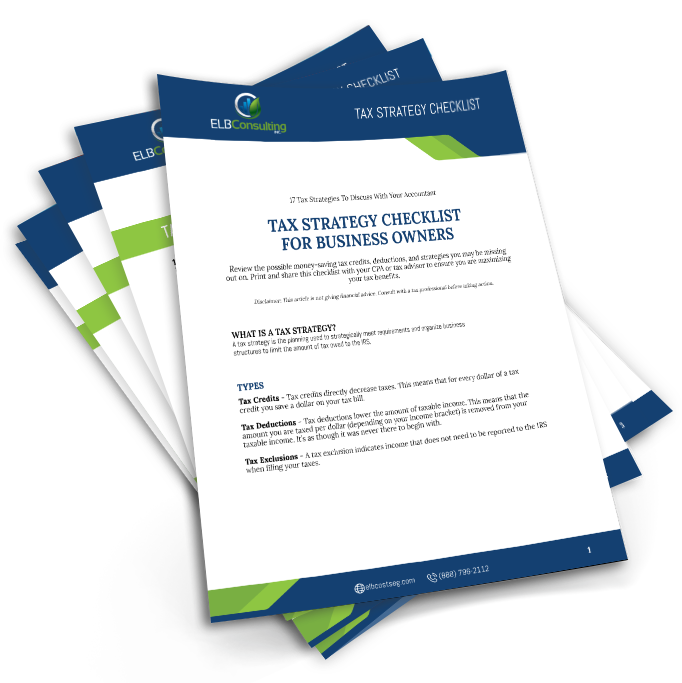Section 41 gives you tax benefits on R&D.
WHAT IS THE RESEARCH TAX CREDIT?
Originally introduced in 1981, the R&D Tax Credit is a general business tax credit under Internal Revenue Code section 41 for companies that incur research and development (R&D) costs in the United States. The research tax credit remains a valuable source of support to businesses that conduct qualified research and development. Let our team show you just how easy it is to start saving today.
Not just for Fortune 500 companies anymore.
FOR NEARLY ALL SIZE BUSINESSES
Since the PATH Act went into effect in 2016, companies who may not have qualified in the past can now can benefit from R&D tax credits. These recent changes are great for both small and mid-size companies; life sciences, biotech, food science, bio-flavoring, breweries/distilleries, aerospace, industrial automation and controls, architectural firms, engineering design, structural/architectural materials, tool & die companies, software & web development, and more. The PATH Act changes even allow for pre-revenue “start-up” firms to offset their FICA tax liability with this R&D tax credit.
Get your research qualified for tax credits.
WHAT QUALIFIES ME FOR THESE TAX CREDITS?
To take advantage of this R&D Tax Credit, a firms Qualified Research Expenses (known as QREs), must pass a rigorous four-part test. The QREs are made up of three components: Wages, Supplies, and Contract Research. Each of the component categories included in the QREs must pass the rigid Four-Part Test criteria below:
How To Qualify For R&D Tax Credits
Qualified Research Expenses, like wages, supplies, and contract research much be:




Technical in Nature
The innovation process must reply on the principles of; A) Physical/Biological Science,
B) Engineering, or C) Computer Science.
Process of Experimentation
The taxpayer must engage in evaluation process that is considering more than one alternative to achieving the end result.
Elimination of Uncertainty
The activity must eliminate uncertainty around the capability, method or design of products or processes.
Permitted Purpose
Must relate to; A) Function, B) Performance, C) Reliability, or D) Quality of new improvements or processes.
How To Qualify For R&D Tax Credits
Qualified Research Expenses, like wages, supplies, and contract research much be:

Technical in Nature
The innovation process must reply on the principles of; A) Physical/Biological Science,
B) Engineering, or C) Computer Science.

Process of Experimentation
The taxpayer must engage in evaluation process that is considering more than one alternative to achieving the end result.

Elimination of Uncertainty
The activity must eliminate uncertainty around the capability, method or design of products or processes.

Permitted Purpose
Must relate to; A) Function, B) Performance, C) Reliability, or D) Quality of new improvements or processes.
Are you a start-up?
The key provision for startup businesses is the payroll tax offset, allowing qualified startup companies the opportunity to use their R&D tax credits to offset federal payroll taxes. This new payroll tax offset allows companies to take advantage of this tax credit benefit, regardless of profitability. This provision is particularly valuable for startup and incubator companies that may be heavy on R&D expenses (wages and supplies), and they haven’t yet reached a taxable income level, or pay any federal income taxes.
Are you a start-up?
The key provision for startup businesses is the payroll tax offset, allowing qualified startup companies the opportunity to use their R&D tax credits to offset federal payroll taxes. This new payroll tax offset allows companies to take advantage of this tax credit benefit, regardless of profitability. This provision is particularly valuable for startup and incubator companies that may be heavy on R&D expenses (wages and supplies), and they haven’t yet reached a taxable income level, or pay any federal income taxes.

17 Tax Strategies For Business Owners
TAX STRATEGY CHECKLIST
Discover 17 tax strategies to bring to your accountant and ensure you're making the most of your tax benefits. Enter your email address to download your free, printable copy.
What Are Our Clients Saying?
“I want to thank ELB for helping us with a cost segregation study on our retail assets. The benefit to our company, as a result, have been astounding.”
“ELB Consulting cost segregation study discovered over $395,000 in adjusted cash flow and benefits for my car wash property. I was so impressed with how it worked, I am getting the study done on two more of my car wash/retail stores.”
Ready to get started?

Step One: Call or message us.
Call us at (352) 796-2112 or submit the form below to get started.

Step Two: We perform a fully-engineered study of your property.
We’ll do all the heavy lifting to find you the maximum tax incentives you qualify for.

Step Three: We deliver your ‘CPA-ready’ report.
Get R&D Tax Credits that decrease your tax liability and puts more money in your pocket.
